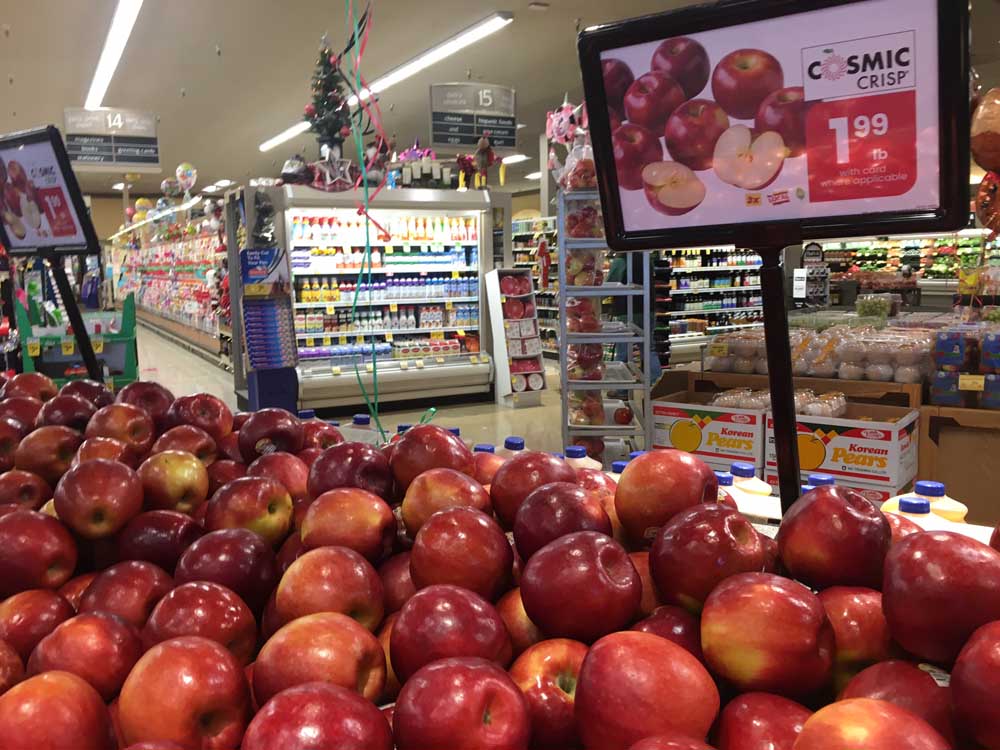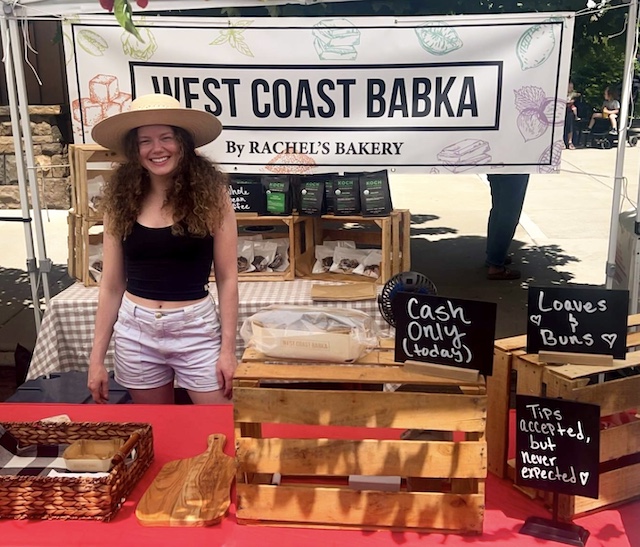Cosmic Crisp begins second year sales
Published 8:00 am Monday, December 7, 2020

- Cosmic Crisp apples on promotion for $1.99 per pound in an East Wenatchee, Washington, Safeway store on Thursday. It’s the start of the variety’s second year of sales.
WENATCHEE, Wash. — Cosmic Crisp, the new Washington state apple, is entering its second year in the marketplace with five times the volume of last year and maybe more than triple the overall return.
Developed over a 20-year period by Washington State University’s apple breeding program in Wenatchee, the apple sold its first 346,000, 40-pound boxes at an average of $72 per box from early December of 2019 into the first few months of 2020, said Brian Focht, manager of the Washington Apple Growers Marketing Association in Wenatchee.
“The launch has exceeded expectations so far with great demand and rave reviews,” Focht said.
The industry grossed about $25 million off the apple in its first season with multiple growers and packer-shipper-sales companies sharing the rewards.
Volume is estimated at 1.7 million boxes this season, and Desmond O’Rourke, world apple analyst and retired WSU agricultural economist, says an average of $50 per box would be “a very good price.”
That would be about $85 million or 4.25% of the $2 billion the state apple industry typically grosses per year.
Honeycrisp and numerous small-volume proprietary varieties give the best returns while big-volume Gala, Red Delicious and other mainstream varieties are generally less profitable.
The industry hopes for strong Cosmic Crisp returns for a number of years, but O’Rourke said it’s unlikely to have as good a run as Honeycrisp which “defied gravity” for about 15 years with volume and prices both going up.
“Honeycrisp benefited from being an early apple. It was able to gradually extend its main selling season as storage regimes improved. So until about 2015-16, it did not overload the market in any region or any period,” O’Rourke said.
Then the gap between supply and demand narrowed. The Honeycrisp average was about $42 per box this past season.
The U.S. forecast is for 26.6 million boxes of Honeycrisp this season with about 15 million of that being in Washington.
While Cosmic Crisp is estimated at 1.7 million boxes, so many trees have been planted that it is expected to be 5.1 million boxes in 2021 and 22 million by 2026.
Washington growers planted 14.4 million Cosmic Crisp trees from 2017 through 2020.
Since it is not an early apple — it isn’t sold until December — it loses about three months of market time and faces more risk of market overload as volume increases, O’Rourke said.
It also faces more competition from Honeycrisp and a lot of new Honeycrisp-like varieties such as Evercrisp, Pazzaz and SweeTango, he said.
“Last year was just a tease supported by a major publicity blitz for Cosmic Crisp,” O’Rourke said. “The current and subsequent seasons, repeat sales, will be the real test. Retailers and consumers will pass judgment and they have lots of varieties to choose from.
“The Washington apple industry needs a more comprehensive strategy than just rolling out proprietary varieties. Above all, it needs a sizable industry promotional program. This is the year to revive that while grower returns will be relatively high due to a short crop.”
WSU and Proprietary Variety Management (PVM), a Yakima company on contract with WSU to manage commercialization, are spending $10.5 million, from tree and fruit royalties, from 2018 through 2022 on promotions, mostly social and digital media.
PVM launched ancillary products including apple slices with Crunch Pak and juices, cider, chocolate and deep dish pie and other co-branded products with Tree Top, Litehouse, 2 Towns Ciderhouse and Remlinger Farms.
Apples have more competition from berries to citrus than ever before and there is a flood of new apple brands, said Kathryn Grandy, PVM director of marketing and operations.
“Retailers cannot possibly have shelf space for the 40-plus apple brands grown and 60-plus apple varietals,” Grandy said. “Retailers will stock what the consumers wants and buys.”






